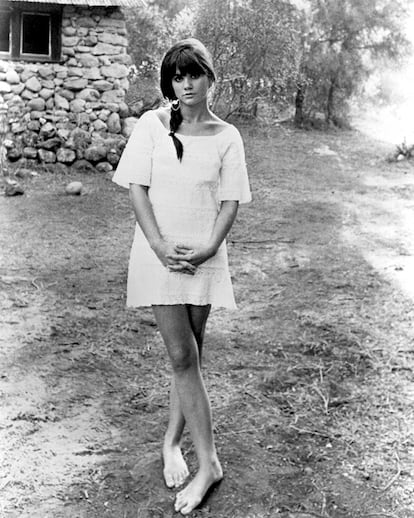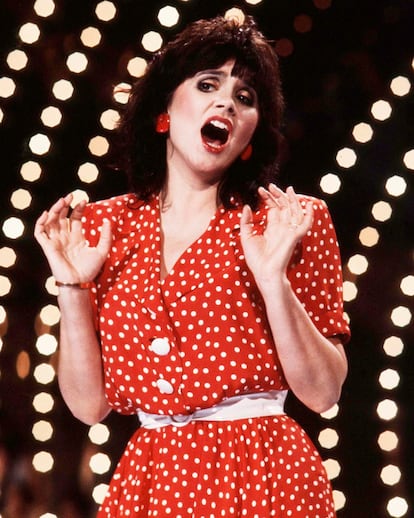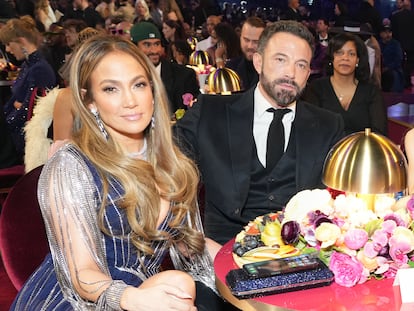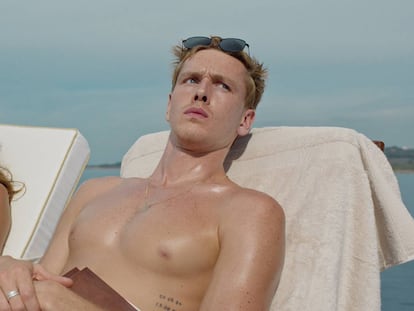‘The Last of Us:’ Why Linda Ronstadt won’t get a cent for her music being used in HBO’s hit show
Although the retired singer will not make any profit from the use of her song ‘Long, Long Time,’ she is taking advantage of the buzz it is generating to promote new projects

It happened with Belinda Carlisle’s Heaven Is a Place on Earth after the 2016 premiere of the third season of Black Mirror. In 2022, it was the turn of Running Up That Hill (A Deal with God), by Kate Bush, in the last season of Stranger Things, and Goo Goo Muck by The Cramps in Wednesday. And, so far in 2023, the HBO series The Last of Us has done it twice: in its first episode with Never Let Me Down Again by Depeche Mode, and then with Long, Long Time, by Linda Ronstadt, from which the third episode even took its title. In a clear exercise in nostalgia, streaming platforms are giving new life (and popularity) to songs that until now had flown under the radar of many millennials and centennials.
In the specific case of Long, Long Time — which was part of Ronstadt’s second album, Silk Purse (1970), and reached number 25 on the Billboard Hot 100 chart — Spotify tweeted that on January 29, after being heard up to three times during the episode, there was a more than 4,900% increase in U.S. streams of the song between 11:00 p.m. and midnight. However, unlike Kate Bush, who pocketed $2.3 million thanks to the Stranger Things effect, Ronstadt will not see any kind of increase in her bank account, because in 2011 she sold her entire catalog to Iconic Artists Group. Furthermore, she never owned the original master recording in the first place, due to the contract she signed with Capitol Records, her first label. Nevertheless, she is taking it well, as she herself told Billboard a few days ago: “I still love the song and I’m very glad that Gary [White, the composer] will get a windfall.”
Born in 1946 in Tucson, Arizona, Linda Ronstadt owns 11 Grammy Awards and has sold more than 100 million copies of her albums. In the mid-1960s she founded the Stone Poneys trio in LA with Bobby Kimmel and Kenny Edwards, precursors of folk rock and country rock in California. The group recorded three albums and scored a single hit covering Michael Nesmith’s Different Drum. That would set her path for the future: although she only composed three songs throughout her long career, she had the ability to perform the music of others and make it her own.

“I always pick material that I will be able to relate to real easily and that most other people would be able to too. It’s just... I don’t really believe in happy songs! Songs about getting your heart broken, that’s always applicable to me in one way or another. I mean, if it’s not about some specific person in my life it’s about a situation,” she confessed to Crawdaddy magazine in 1974. “When I stand on the stage I have to run a movie for every song and it can’t be about something that happened six years ago because by that time I’ve built such a callous over it, it’s not accessible to me anymore. So it has to be about something right now, and love songs, boy, you can apply that to anything; I mean, you can apply it to the fact that you just went down to your accountant and he said, ‘You are fucked in the bank!’”
In 1969, as a solo artists, she recorded Hand Sown… Home Grown, considered the first alternative country album ever recorded by a woman. Then, thanks to her ability to successfully jump between genres and to three records that reached the top of the US charts — Heart Like a Wheel (1974), Simple Dreams (1977) and Living in the USA (1978) — she became the most popular and highest-paid singer of the 1970s. Contrary to other contemporaries, she conquered stadiums and pavilions, venues that were reserved for male artists and bands. Not for nothing was she called “The Queen of Rock” and “The First Lady of Rock.”
Surprisingly, she always doubted herself. In the 2019 documentary Linda Ronstadt: The Sound of My Voice, Peter Asher, her former manager, revealed that when she saw people whispering at her concerts, she imagined they were saying: “She’s the worst singer I’ve ever heard.” In an interview she gave that year to The New Yorker, Ronstadt recalled: “I just didn’t feel like I could quite sing well enough. It was best when I forgot about everything and just thought about the music, but it took me a long time to get there. I didn’t want to see people that I knew in the audience. I didn’t like to see the audience, actually. I couldn’t understand why they’d come.” When asked about the biggest challenges she had to face as a public figure, she replied: “Not having the ability to observe other people, because people are observing you. I had to keep my head down all the time. It was kind of excruciating. I still feel that way. I don’t like to be on the spot. Also, relationships were hard, because I was always on the [tour] bus.”
She never married, but she did not lack suitors. In the 1970s, she had a high-profile relationship with California Governor Jerry Brown, and in the 1980s she dated Bill Murray, Jim Carrey, George Lucas and singer Aaron Neville. “Relationships are almost impossible. First of all you have the possibilities of new ones waved in your face every three seconds. It’s a real ‘pop’ situation. And second of all you’re not around long enough. And also the people you come in contact with are other musicians and everybody’s real competitive,” she reflected in Crawdaddy at the height of her popularity.
To the surprise of her fans, in 1980 she turned her back on the big arena concerts to perform as a soprano in a new Broadway production of the operetta The Pirates of Penzance. Even on the verge of winning the Tony award for best performance by a leading actress in a musical, she proved her innate ability to reinvent herself. Few can boast of a vocal versatility and a discography as eclectic as hers: in 1987 she released both a ranchera album (Canciones de mi padre, the best-selling album in Spanish to date in the United States) and a country album with Emmylou Harris and Dolly Parton (Trio, which had a second installment in 1999).

In the 1990s, she adopted two children (Mary Clementine in 1990 and Carlos in 1994) and combined the role of mother with sold-out tours. However, after secretly dragging some serious problems for a while, in 2011 she finally announced her retirement. Her followers had to wait until 2013 to find out the real reason: “I can’t sing. I have Parkinson’s disease,” she explained in an interview for the American Association of Retired Persons. “There’s absolutely nothing I can do. I have a form of Parkinsonism that doesn’t respond to standard Parkinson’s meds, so there’s no treatment for what I have. It’s called PSP — Progressive Supranuclear Palsy. I just have to stay home a lot,” she told The New Yorker in 2019.
Today, Ronstadt is 76 and lives in San Francisco. Apparently, she has not seen the episode of The Last of Us that brought her back into the conversation, but she plans to take advantage of the popularity of the series to get involved in a new project: her own biopic, directed by James Keach. Her voice, far from fading away, is as alive as ever.
Sign up for our weekly newsletter to get more English-language news coverage from EL PAÍS USA Edition
Tu suscripción se está usando en otro dispositivo
¿Quieres añadir otro usuario a tu suscripción?
Si continúas leyendo en este dispositivo, no se podrá leer en el otro.
FlechaTu suscripción se está usando en otro dispositivo y solo puedes acceder a EL PAÍS desde un dispositivo a la vez.
Si quieres compartir tu cuenta, cambia tu suscripción a la modalidad Premium, así podrás añadir otro usuario. Cada uno accederá con su propia cuenta de email, lo que os permitirá personalizar vuestra experiencia en EL PAÍS.
¿Tienes una suscripción de empresa? Accede aquí para contratar más cuentas.
En el caso de no saber quién está usando tu cuenta, te recomendamos cambiar tu contraseña aquí.
Si decides continuar compartiendo tu cuenta, este mensaje se mostrará en tu dispositivo y en el de la otra persona que está usando tu cuenta de forma indefinida, afectando a tu experiencia de lectura. Puedes consultar aquí los términos y condiciones de la suscripción digital.
More information
Archived In
Últimas noticias
Most viewed
- Sinaloa Cartel war is taking its toll on Los Chapitos
- Oona Chaplin: ‘I told James Cameron that I was living in a treehouse and starting a permaculture project with a friend’
- Reinhard Genzel, Nobel laureate in physics: ‘One-minute videos will never give you the truth’
- Why the price of coffee has skyrocketed: from Brazilian plantations to specialty coffee houses
- Silver prices are going crazy: This is what’s fueling the rally










































